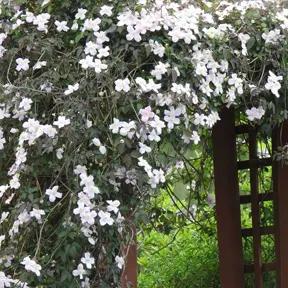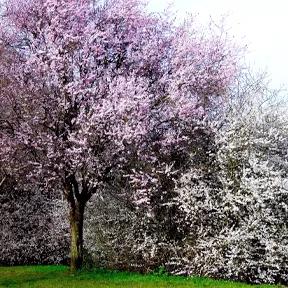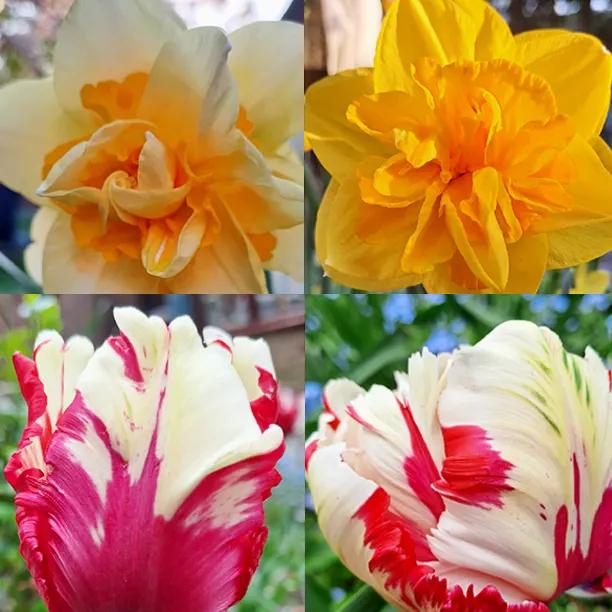Himalayan Birch, Large Trees
- Smooth white bark. Airy canopy.
- Not suitable for chalk or shade.
- Max. Height: 20m
- Bareroot Delivery: Nov-Mar.
Recommended extras
Description
Betula utilis Jacquemontii: Bareroot Himalayan Birch Trees in Standard Sizes
Himalayan birch, Betula utilis Jacquemontii, is an elegant, medium-sized tree with beautiful white bark. Unlike a native birch tree, the almost pure white bark stays smooth and bright when it is mature.
In spring, the tree makes long catkins that provide early season pollen for bees. The autumn leaf colour is a pale, warm yellow that contrasts nicely with the white bark.
They can reach a height of about 15-20 metres, with a very upright habit.
We also grow the even more ornamental Snow Queen.
Browse our varieties of birch tree or our full range of ornamental trees.
Delivery season: Birches are delivered bareroot during late autumn and winter, approximately November-March inclusive.
Choosing a size: Small trees are cheaper, easier to handle and more forgiving of less than ideal aftercare, so they are best for a big planting project. If instant impact is your priority, or if you are only buying a few plants for use in a place where it is convenient to water them well in their first year, then you may as well use bigger ones. All our bareroot trees are measured by their height in centimetres above the ground (the roots aren't measured).
Features:
- Height: To 20m, very upright
- Soil: Any except from chalk. Best in close to full sun.
- Use: Screening, winter interest
- Colour: Pale yellow Autumn leaves
- Unique, elegant white bark
- Bareroot delivery only: November-March
Growing Himalayan Birch
It will grow on most soils apart from shallow chalk, and it is well suited to urban sites. It will tolerate light shade, but full sun is best.
Apart from removing the usual dead, damaged or crossing branches, it is best not to prune birches.
Planting Instructions
Notes on planting Himalayan birch trees:
Himalayan birch trees will grow well in most sunny conditions and tolerate poor soil, although they prefer moist, rich earth. They will not grow well if the site is chalky or shady.
Prepare your site before planting:
It is good to dig over the site where you plant a tree several months in advance. Kill the weeds first: for tough weeds like nettles, brambles and ground elder, you will usually need a weed-killer to get rid of them. When you dig the soil over, remove stones and other rubbish and mix in well rotted compost or manure down to the depth of about 2 spades.
Watch our video on how to plant a tree for full instructions.
Remember to water establishing trees during dry weather for at least a year after planting.
Tree Planting accessories:
Prepare your site for planting by killing the weeds and grass.
You can buy a tree planting pack with a wooden stake & rubber tie to support the tree and a mulch mat with pegs to protect the soil around the base of your tree from weeds and drying out.
We suggest that you use mycorrhizal "friendly fungi" on the roots of all newly planted large trees: if your soil quality is poor, we strongly recommend it.
You can also improve your soil with bonemeal organic fertiliser.
Did You Know?
Himalayan, or Kashmir, birch's native range is centred on Nepal and the first trees were introduced to Britain in the 1880's. They are named for the French naturalist Victor Jacquemont (1801-1832), a guest of the Sikh Maharajah Ranjit Singh (1780-1839), who explored the Kashmir region in 1831, and died of cholera on the way back to Mumbai.
It has been extensively cultivated and the trees that you buy from our nursery are grafted, not grown from seed, to ensure that there is no natural variation between trees.
Birch is a pioneer species: it is fast-growing, relatively short-lived, and thrives on sunny, poorly fertile sites.
Standard trees are measured by their girth in centimetres 1 metre above ground level: their trunk's waist measurement. Unlike sapling trees and hedge plants, standards aren't measured by their height, which will vary quite a bit both between and within species.
So, a 6/8cm standard tree has a trunk with a circumference of 6-8cm and an 8/10 standard has a trunk 8-10cm around. This measurement makes no difference to the tree's final height.
On average, standard trees are 2-3.5 metres tall when they arrive, but we cannot tell you precisely how tall your trees will be before we deliver them.
It's Spring Planting Season 2025

Pot Grown & Plug Plants Delivered

Direct from the Nursery Value

No more broken plants in the post!


 1.webp)
 1.webp)
 4.webp)

 3.webp)







